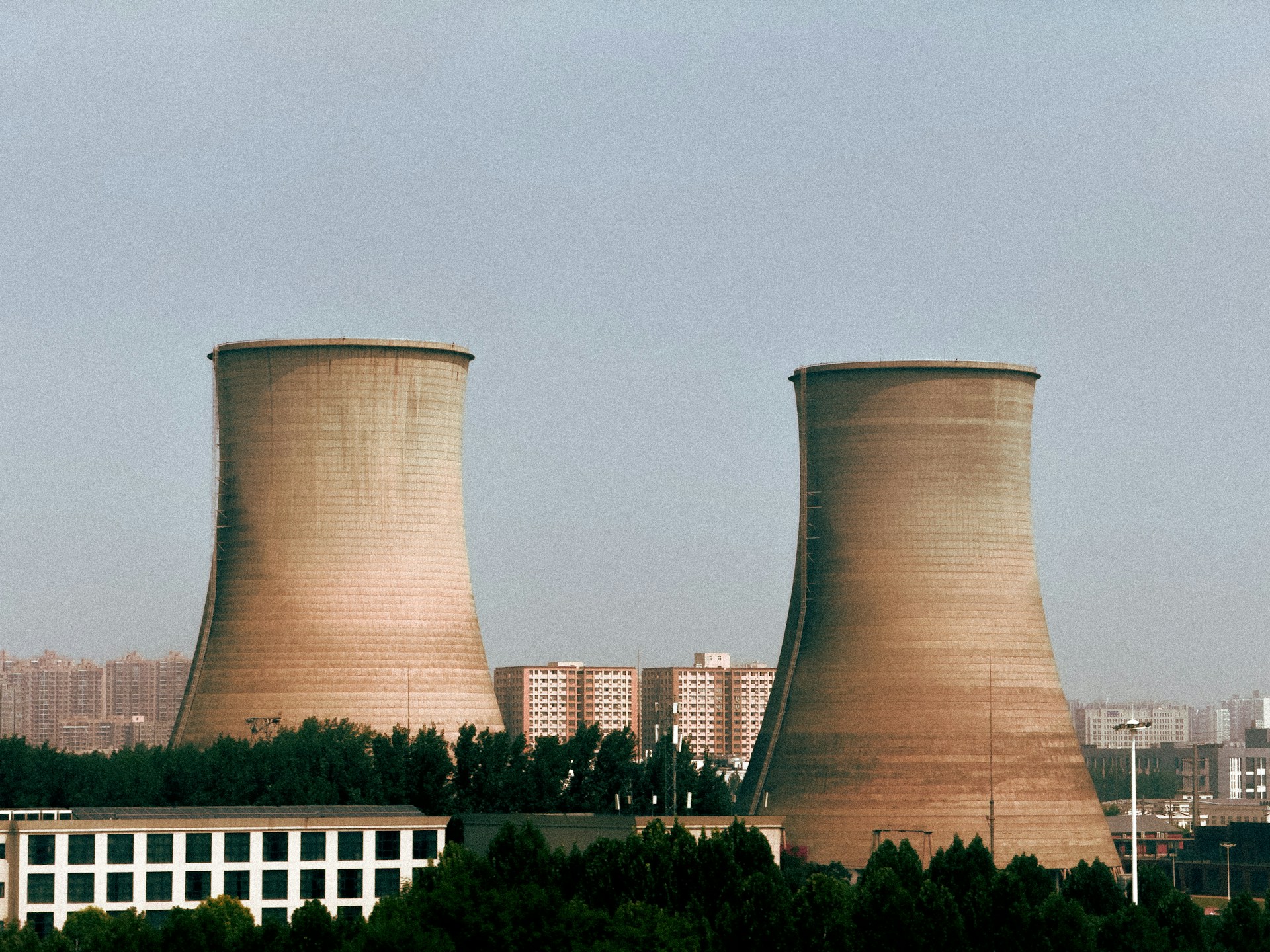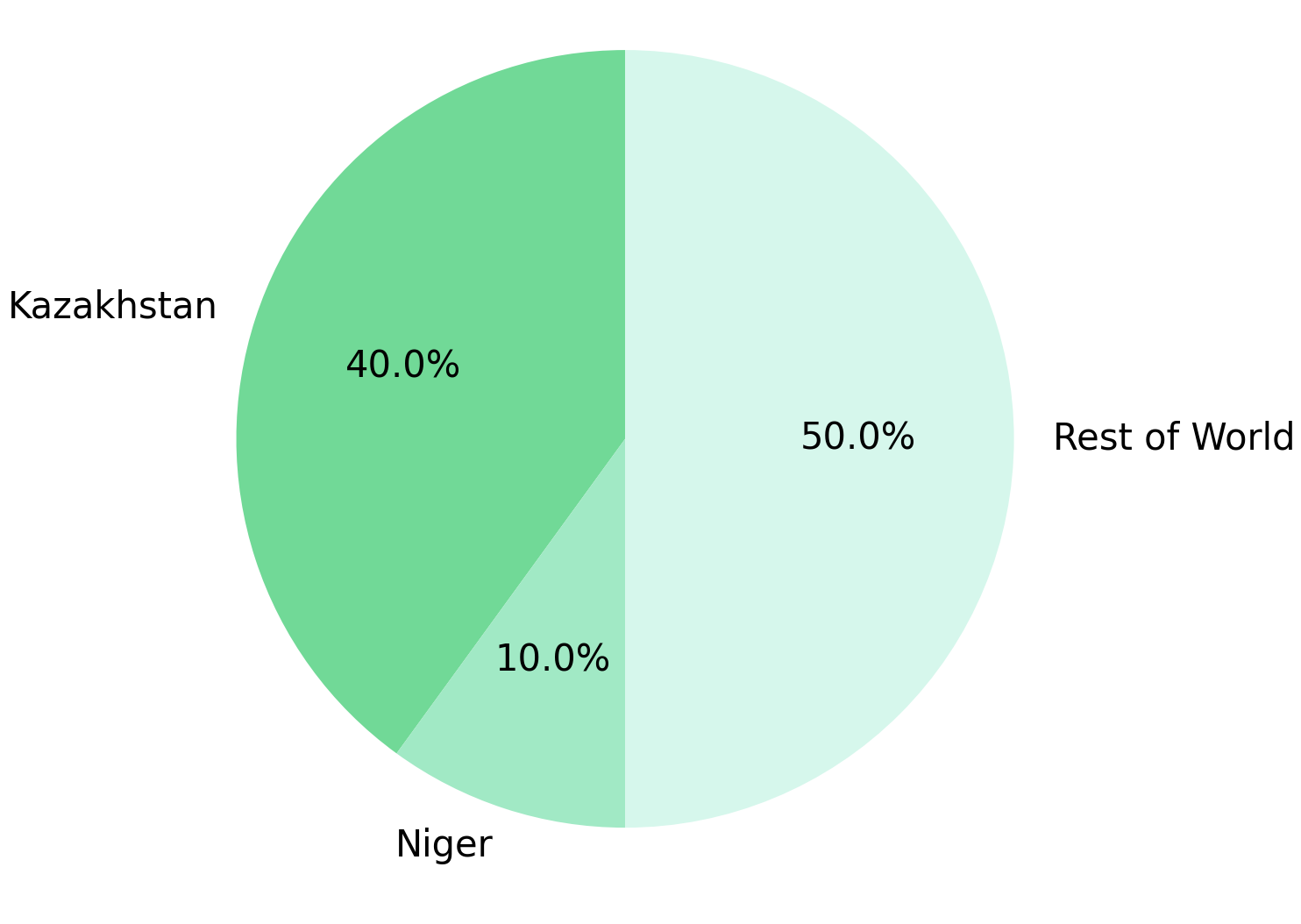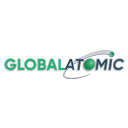Dual Supply Shock Sets Uranium Up for Sustained Price Repricing

Kazatomprom cuts & Niger instability create dual uranium supply shock. Policy support & AI demand suggest $72/lb correction temporary. Strategic analysis.
- Kazatomprom's 20% production cut and the potential closure of Orano's SOMAIR mine in Niger present a rare "dual supply shock," compounding already thin global uranium markets.
- Uranium futures corrected to approximately $72.30 per pound mid-July, but structural drivers, including supply tightening, United States policy support, and World Bank's financing pivot, suggest the correction may be temporary.
- Geopolitical risks (Ukraine nuclear safety, Niger instability) highlight uranium's strategic value for energy security and military alliances.
- Technological and policy shifts (artificial intelligence-driven reactor builds, United States enrichment support) reinforce structural demand for nuclear energy in decarbonization and energy transition strategies.
- ATHA Energy, Energy Fuels, IsoEnergy, and Global Atomic, demonstrate how well-positioned uranium assets across North America and Africa align with these supply and demand shifts.
Uranium's Fragile Supply Base Exposed
Uranium markets operate within a uniquely vulnerable framework where supply concentration, thin derivatives trading, and shrinking secondary supply create extraordinary sensitivity to production disruptions. Kazatomprom's guidance reduction and escalating instability around Niger's mining operations represents a dual supply shock that exposes the structural fragility underlying global uranium supply chains.
Kazakhstan and Niger collectively account for approximately 50% of global primary uranium production, making simultaneous disruptions from both regions particularly consequential for market dynamics. Unlike other commodities with diversified supply bases and robust secondary markets, uranium's concentrated production profile amplifies the impact of individual country or company-level disruptions.

The timing of these developments coincides with already constrained uranium markets, where secondary supply from decommissioned weapons and utility stockpiles continues to decline. This combination creates a supply environment where even modest disruptions can trigger disproportionate price responses, as evidenced by previous rallies following inventory accumulation by entities such as Sprott Physical Uranium Trust.
Kazatomprom's Guidance Reduction
Kazatomprom's revised production guidance targets a mid-point of 14 million pounds of uranium trioxide, representing a 20% reduction from late 2023 projections. This adjustment reflects operational constraints and strategic positioning by the world's largest uranium producer, which has historically served as a swing supplier for both utilities and financial market participants.
The Kazakhstani producer's role extends beyond simple supply provision, as its production decisions directly influence price stability and market sentiment. Previous uranium price rallies, particularly those triggered by Sprott Physical Uranium Trust's aggressive purchasing campaigns, demonstrated how Kazatomprom's supply discipline can amplify market movements.
As Chief Executive Officer Troy Boisjoli of ATHA Energy observes regarding supply risks in key jurisdictions:
"We're fortunate because this is like exploring in the north northeast Athabasca basin circa 1965, but what we're seeing globally is that supply concentration creates real vulnerability for utilities and investors alike."
Niger and the Orano SOMAIR Mine Risk
Niger contributes approximately 5% of global uranium supply, with Orano's SOMAIR mine representing a critical component of Western uranium supply chains. Political instability following the 2023 military coup has introduced export restrictions and operational uncertainty that threatens continued production from the region.
The closure or extended suspension of SOMAIR operations would remove significant supply capacity during a period when alternative sources remain constrained. This development carries particular implications for European energy security, given France's historical reliance on Niger uranium for its substantial nuclear power fleet.
President and Chief Executive Officer Stephen Roman of Global Atomic, whose Dasa project is advancing in Niger despite regional challenges, notes:
"We received a letter from the president and he copied all of his ministers and he said this is a strategic project it's of national importance we're 100% behind it."
Price Movements and Market Sensitivity
Uranium pricing demonstrated characteristic volatility during the second quarter, declining from approximately $79 per pound in late June to $72.30 per pound by mid-July. This correction occurred within a market structure characterized by limited liquidity and high sensitivity to sentiment shifts, where relatively modest transaction volumes can generate substantial price movements.
The uranium market's thin trading profile distinguishes it from more liquid commodity markets, creating an environment where institutional participation can quickly overwhelm available supply. This dynamic has repeatedly manifested during periods of financial market interest, when entities seeking uranium exposure discover limited availability for meaningful position accumulation.
Investor Behavior in a Thin Market
Sprott Physical Uranium Trust's $200 million uranium acquisition campaign illustrated how quickly demand shifts can influence pricing within constrained market structures. The trust's systematic purchasing approach removed substantial quantities from spot markets, contributing to price appreciation that attracted additional financial market attention.
The importance of market liquidity extends beyond immediate price discovery to long-term institutional participation. Many potential investors remain constrained by the limited availability of physical uranium or liquid financial instruments, creating latent demand that could emerge as market structure evolves.
Utilities and Contracting Cycles
Recent price pullbacks may encourage utility companies to accelerate long-term contracting activities, particularly as concerns about supply security intensify. United States utilities face particular pressures related to supply chain diversification, given upcoming restrictions on Russian uranium imports and limited domestic production capacity.
President and Chief Executive Officer Mark Chalmers of Energy Fuels emphasizes the strategic importance of domestic uranium production:
"We're the largest producer of uranium in the United States, and are building material revenue stream on the uranium business. We have always built our company around that we didn't need government support, but it certainly would be appreciated for the right support to break the dependence on foreign sources."
Geopolitics & Strategic Resource Positioning
Nuclear energy's intersection with national security priorities has elevated uranium beyond conventional commodity markets into strategic resource considerations. Recent developments in Ukraine, Niger, and United States enrichment policy demonstrate how geopolitical factors increasingly influence uranium market dynamics and investment decision-making.
Energy security concerns and supply chain resilience have prompted policy responses that support domestic uranium production and processing capabilities. These developments signal a fundamental shift in how governments approach nuclear fuel supply chains, with implications extending beyond immediate market participants to broader energy policy frameworks.
Ukraine's Nuclear Safety Risk
Ongoing military activity near Ukraine's Zaporizhzhya nuclear power plant has highlighted vulnerabilities in nuclear infrastructure during geopolitical conflicts. While operational impacts remain limited, the perception of risk surrounding nuclear facilities in conflict zones reinforces the strategic premium associated with secure uranium supply chains.
Nuclear power plants as potential conflict targets underscore energy security considerations that extend beyond traditional commodity market analysis. These developments contribute to policy discussions about supply chain resilience and domestic production capabilities across multiple jurisdictions.
Niger's Instability & Western Supply Chains
France's historical reliance on Niger uranium demonstrates how geopolitical instability in producing regions can disrupt established supply relationships. The potential for extended disruptions in Niger highlights the importance of supply diversification for utilities and governments seeking energy security.
Global Atomic's Dasa project development continues despite regional challenges, potentially providing future supply diversification for Western utilities. The project's advancement illustrates how well-positioned companies can navigate geopolitical complexities while advancing strategic resource development.
Policy Shifts Supporting Nuclear Expansion
United States government initiatives and World Bank financing policy changes represent unprecedented institutional support for nuclear power expansion and domestic uranium production. These policy shifts address long-standing barriers to nuclear energy development while supporting supply chain resilience objectives.
The magnitude of policy support reflects broader recognition of nuclear energy's role in climate objectives and energy security considerations. Regulatory streamlining, financing support, and trade restrictions on foreign uranium sources create a comprehensive framework supporting domestic nuclear fuel production and processing capabilities.
United States Domestic Enrichment & Licensing Support
Accelerated permitting processes and reduced regulatory barriers support domestic uranium production and processing expansion. Trade restrictions on Russian uranium imports, combined with licensing support for domestic projects, create market conditions favoring United States-based uranium assets.
These policy developments carry particular significance for companies with permitted United States uranium projects, as Chief Operating Officer Marty Tunney of IsoEnergy explains:
"We've got your permits in place, we've got a fully permitted project that we can deliver feed, we've got a mill to go to. Key state and federal operating permits in place provide time savings of 3 to 5 years and cost savings of more than $1 million per mine."
World Bank's Financing Pivot
The World Bank's decision to finance nuclear power projects represents a fundamental shift from historical reluctance to support nuclear energy development. This policy change could significantly impact global capital flows and reduce financing costs for nuclear power projects in developing economies.
International financing support for nuclear power development reinforces the technology's role in global decarbonization strategies while supporting uranium demand growth. The availability of multilateral financing could accelerate nuclear power adoption in regions previously constrained by capital availability.
Chief Executive Officer Troy Boisjoli of ATHA Energy notes the significance of improved capital access:
"Global capital for exploration and development has become much more available as institutions recognize uranium's strategic importance. This creates opportunities for companies with quality assets in secure jurisdictions."
Technology & Structural Demand Drivers
Technological developments and structural demand themes continue supporting long-term uranium market fundamentals. Artificial intelligence-driven electricity demand, advanced reactor technologies, and sustained decarbonization commitments create demand scenarios that exceed most conventional projections.
The intersection of multiple demand drivers, from data center electricity requirements to advanced reactor deployment, suggests uranium demand growth may accelerate beyond historical precedent. These structural themes operate independently of short-term price movements, supporting long-term market fundamentals.
Artificial Intelligence-Accelerated Reactor Construction
Westinghouse's collaboration with Google on advanced reactor technologies demonstrates how artificial intelligence applications are driving nuclear power development. The potential for compressed construction timelines could accelerate demand realization compared to traditional nuclear development schedules.
Artificial intelligence applications require substantial electricity generation capacity, with nuclear power providing carbon-free baseload generation that aligns with corporate sustainability commitments. This demand profile supports nuclear capacity expansion beyond traditional utility-driven development patterns.
Public Perception
The International Atomic Energy Agency's confirmation of safety protocols for treated water discharge from Fukushima provides positive signals for maintaining nuclear energy's social license. Successful resolution of post-accident concerns supports broader nuclear energy acceptance and development prospects.
Public acceptance remains critical for nuclear energy expansion, with successful management of legacy concerns supporting new project development. These developments contribute to improved investment sentiment around nuclear energy and uranium markets.
Company-Level Positioning Within the Macro Narrative.
The geographic and operational diversity represented by these companies provides exposure to different aspects of the uranium market opportunity. From Canadian exploration scale to United States production capabilities and African development projects, these assets collectively demonstrate the investment themes driving uranium market fundamentals.
ATHA Energy – Exploration Scale in Canada
ATHA Energy controls the largest uranium land position across Canada's premier uranium districts, including the Athabasca, Thelon, and Central Mineral Belt regions. The company's Lac 50 deposit, with 43.3 million pounds of uranium trioxide at 0.69% grade, represents one of the highest-grade uranium deposits globally outside the Athabasca Basin.
Recent exploration success at the Angilak project demonstrates the scarcity value inherent in Tier-1 uranium jurisdictions. The company's technical team, led by industry veterans with Athabasca Basin development experience, continues advancing exploration targets with significant scale potential.
Chief Executive Officer Troy Boisjoli emphasizes the strategic value of the company's land position:
"We have 100% control of this Angikuni Basin, and our technical team believes this is like exploring in the north northeast Athabasca basin circa 1965. We've de-risked some exploration targets with ground geophysics in two areas and went 25 for 25 [drilling success] stepping out on Lac 50 last year."
Energy Fuels – United States Uranium Producer, with Rare Earth Elements Leverage
Energy Fuels operates as the largest uranium producer in the United States, with the White Mesa Mill providing the only conventional uranium processing facility in the country. The company's strategic positioning includes rare earth elements production capabilities, creating exposure to multiple critical mineral themes.
Recent production success at the Pinyon Plain mine demonstrates the company's operational capabilities, with grades exceeding previous estimates by 33% to 100% in numerous areas. The integration of rare earth elements processing with uranium production creates unique leverage to critical mineral supply chain themes.
President and Chief Executive Officer Mark Chalmers notes the company's strategic positioning:
"Energy Fuels is a unique company where we are a critical mineral company building a critical mineral hub that is built around the uranium industry as the largest producer of uranium in the United States. We're building a strategy of commercially being able to produce 10 or more critical elements at low-cost structures."
IsoEnergy – High-Grade Canada Plus United States Near-Term Production
IsoEnergy advances the Hurricane deposit in Saskatchewan's Athabasca Basin, featuring 48.6 million pounds of indicated resources at 34.5% grade. The company's United States assets, including the Tony M mine, provide near-term production optionality with existing permits and tolling agreements.
The combination of world-class Canadian uranium resources with permitted United States production capabilities creates strategic optionality across multiple development timelines. The company's focus on Tier-1 jurisdictions emphasizes regulatory and operational stability.
Chief Operating Officer Marty Tunney explains the company's strategic approach:
"IsoEnergy is focused on our flagship uranium asset in the Athabasca basin where we've got the highest grade uranium deposit in the world and secondly focused on getting back into production at our mines in Utah. We've got a fully permitted project that we can deliver feed, we've got a mill to go to."
Global Atomic – Dasa in Niger Amid Geopolitical Flux
Global Atomic's Dasa project in Niger features 73 million pounds of uranium reserves with projected lowest quartile operating costs. The project targets production commencement in the second quarter of 2026, providing near-term supply in a constrained market environment.
Despite regional geopolitical challenges, the project maintains support from Niger's government and continues advancing toward production. The strategic importance of the project for Niger's economy provides operational stability despite broader regional concerns.
President and Chief Executive Officer Stephen Roman emphasizes government support for the project:
"We are on schedule to start producing in Q2/26. The mine is 75% there. We received a letter from the president saying this is a strategic project of national importance, we're 100% behind it."
The Investment Thesis for Uranium
- Supply constraints, policy support, and structural demand drivers creates compelling investment fundamentals for uranium markets and well-positioned companies. Multiple reinforcing themes support sustained uranium price appreciation and strategic value creation opportunities.
- Supply shock risk premium emerges from Kazatomprom's production cuts and Niger's operational uncertainty, revealing fragility in global uranium supply chains that supports price premiums for reliable production sources.
- Thin market dynamics amplify modest supply-demand imbalances into significant price movements, creating asymmetric upside potential as institutional demand encounters limited physical availability.
- Policy acceleration removes traditional barriers to nuclear power development while supporting domestic uranium production capabilities through regulatory streamlining and trade restrictions.
- Geopolitical elevation of uranium's strategic value positions the commodity beyond conventional market dynamics into national security considerations that support long-term demand and supply diversification efforts.
- Strategic positioning across the uranium value chain provides multiple avenues for value creation, from exploration success in premier jurisdictions to production capabilities in secure regulatory environments.
- Technology-driven demand acceleration from artificial intelligence applications and advanced reactor development supports structural demand growth beyond traditional utility requirements.
- Financial market evolution continues expanding institutional access to uranium exposure through physical funds and mining company investments, supporting sustained capital allocation to the sector.
- Risk-adjusted return profiles favor uranium investments given asymmetric upside potential from constrained supply meeting accelerating demand across multiple application sectors.
The simultaneous emergence of production constraints from Kazatomprom and operational uncertainty in Niger creates a dual supply shock that exposes fundamental vulnerabilities in global uranium markets. These developments occur within a market structure already characterized by concentrated supply, limited liquidity, and declining secondary sources.
Recent price corrections appear temporary given structural fundamentals supporting sustained uranium demand growth. Policy support from the United States government and World Bank, combined with technology-driven demand acceleration, creates demand scenarios that exceed available supply capacity at current price levels.
For institutional investors, uranium markets present one of the most compelling asymmetric supply-demand investment opportunities within natural resources. Constrained supply, policy support, and structural demand growth suggests sustained repricing potential that extends well beyond current price levels.
Analyst's Notes




Subscribe to Our Channel
Stay Informed















































